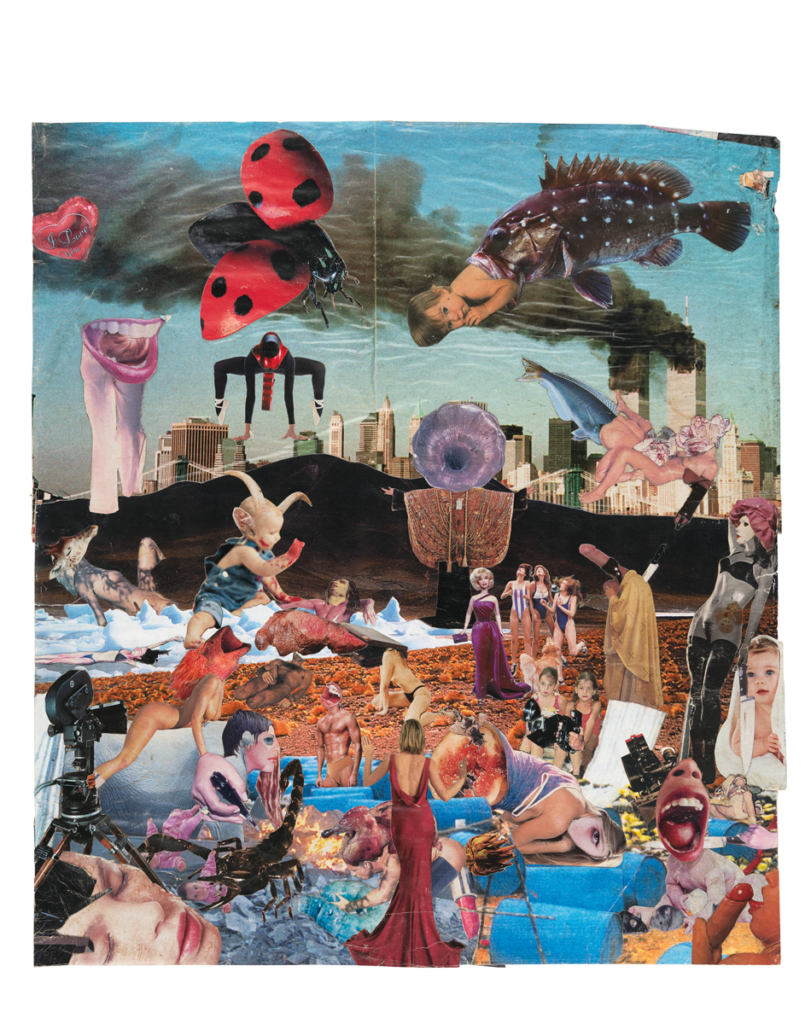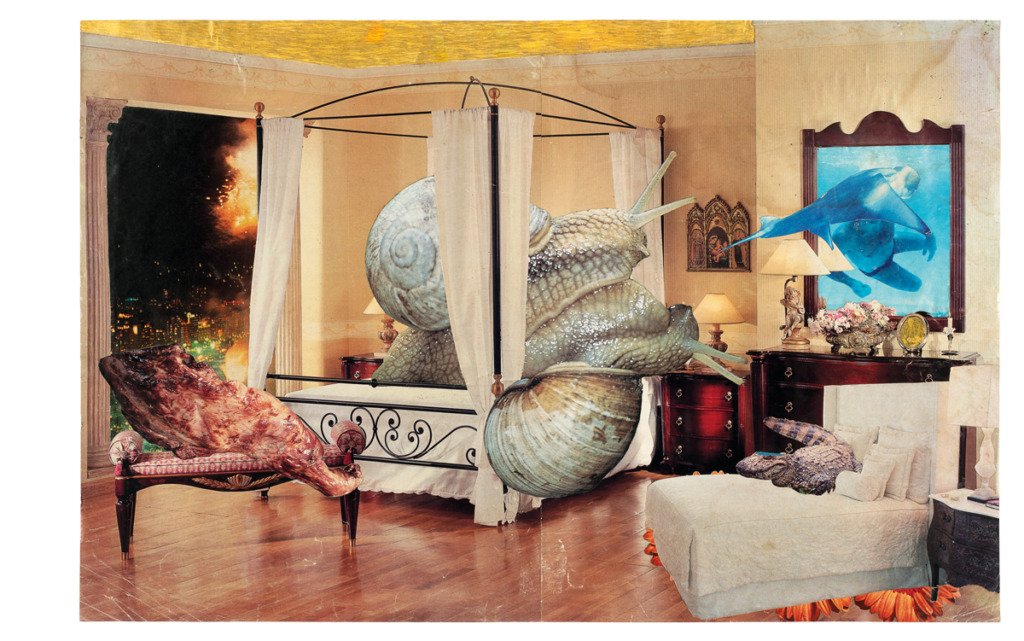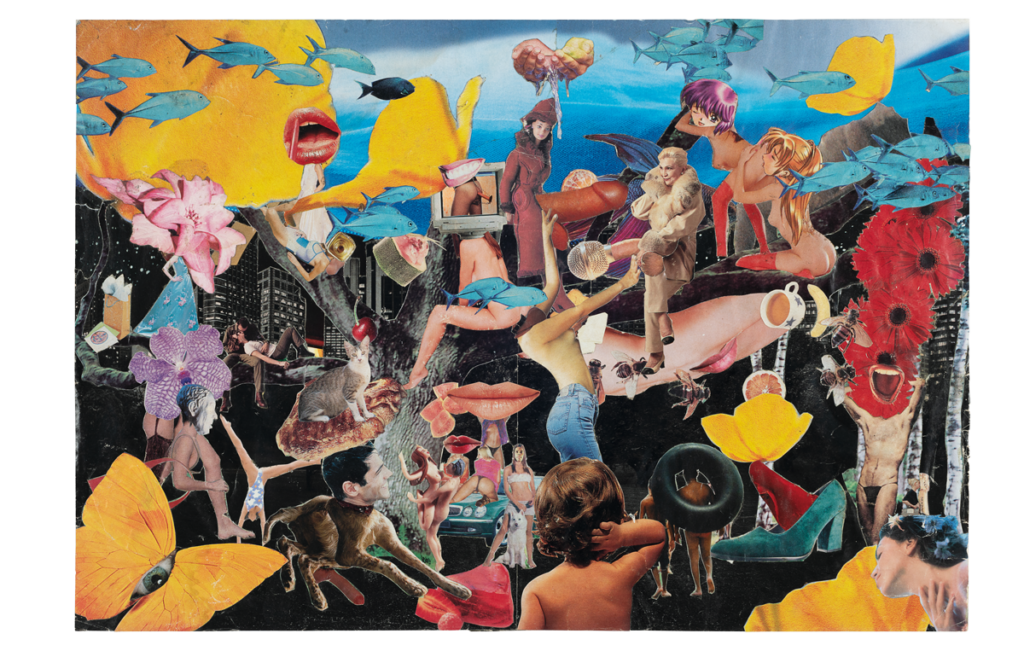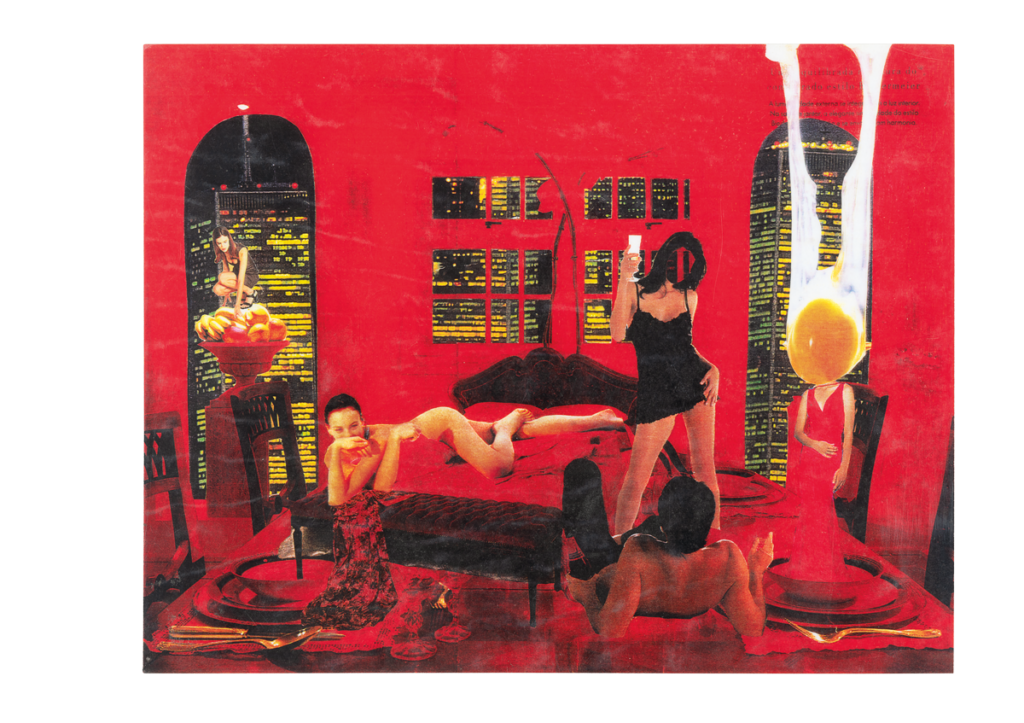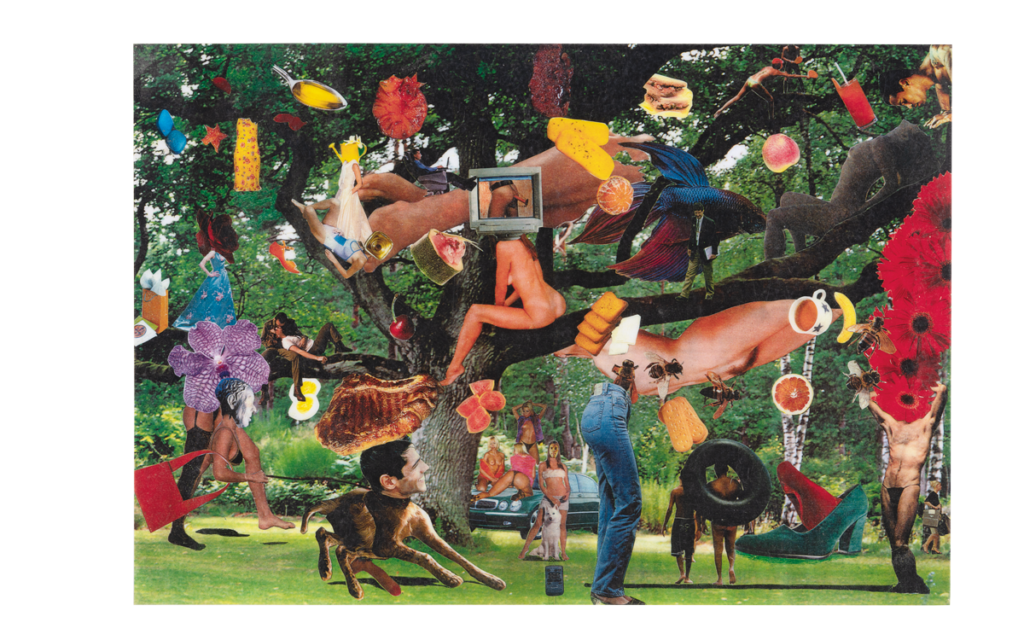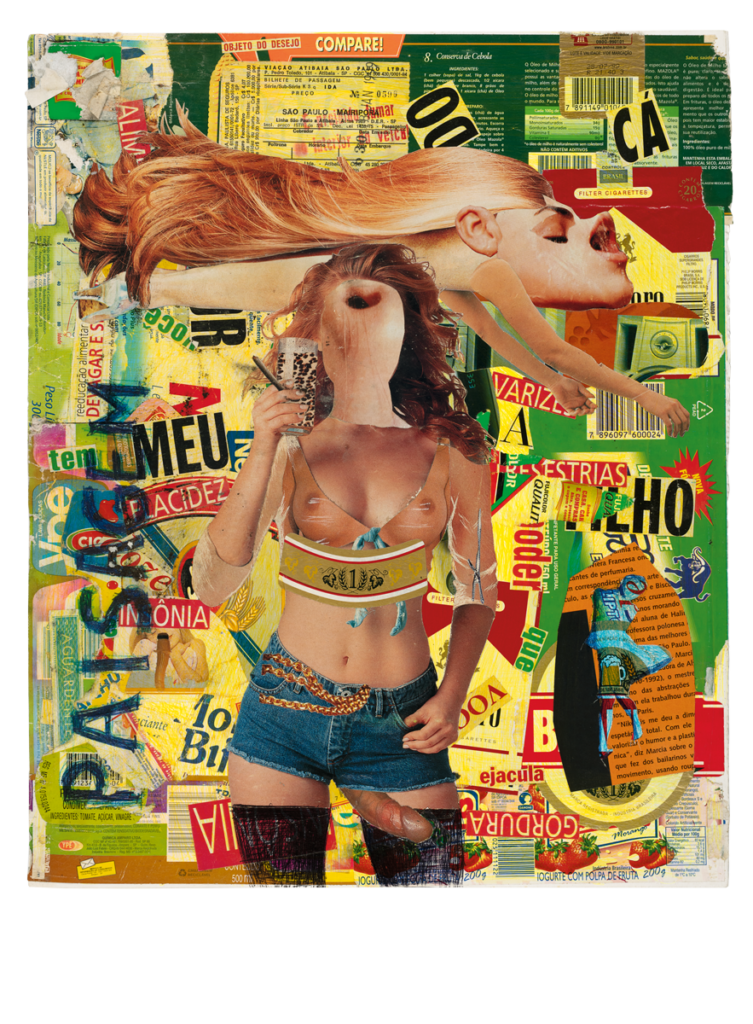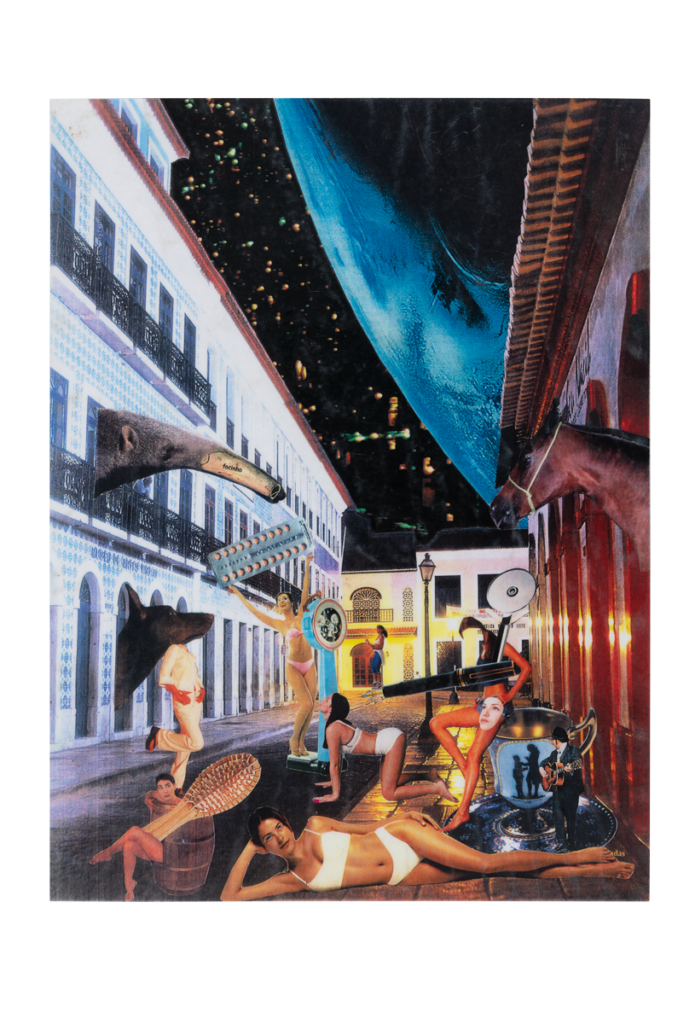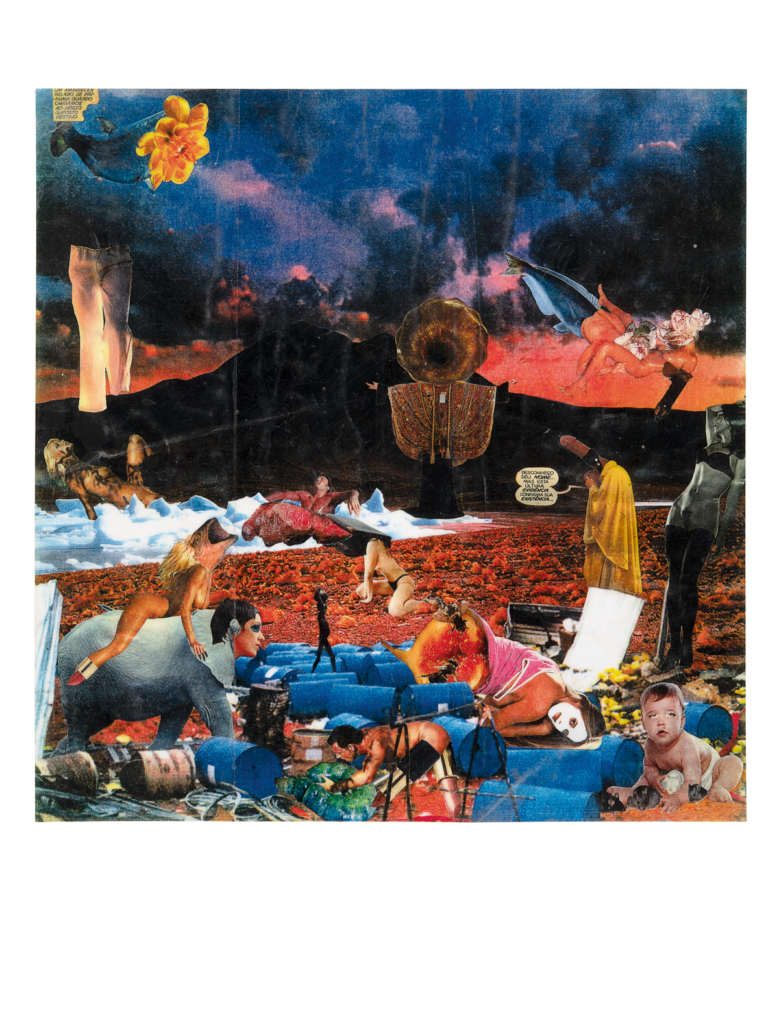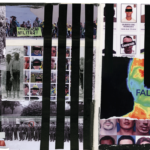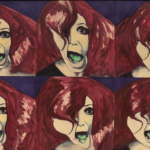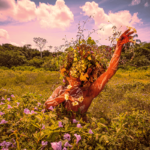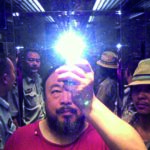Fragments of a particular reality
Publicado em: 3 de August de 2023Sidney Amaral was a restless artist. Committed to experimentation, study and technical refinement, he explored different languages and materialities while developing a unique style. His work provokes feelings of strangeness, by using sophisticated montages from which eroticism, irony, sensitivity and social criticism emerge. Amaral was able to access the depths of human life and was concerned with the impact on the world of things he used to do, both in his personal interactions and in public actions. Throughout his life, he created enchantments to reduce the distance between private and collective spaces.
In his installations Os chinelos da Mara [Mara’s flip-flops] (2001) and Acesso restrito [restricted access] (2006), the artist from São Paulo makes spaces and everyday objects from marble and gilded bronze. In the first work, we see part of a shower cabinet with his then-girlfriend Lucimara’s flip-flops – they went on to marry and remained together until his early death in 2017. The second work depicts the backstage area frequented by workers when setting up an exhibition, with banal items such as a bucket of paint, a ladder and a fire extinguisher carved strikingly in marble, bronze and porcelain. If Os chinelos da Mara takes us into the intimacy of the artist’s home, Acesso restrito refers to the need to break down the walls and doors of social and labor inequality in the arts world, making visible a precarious labor market.
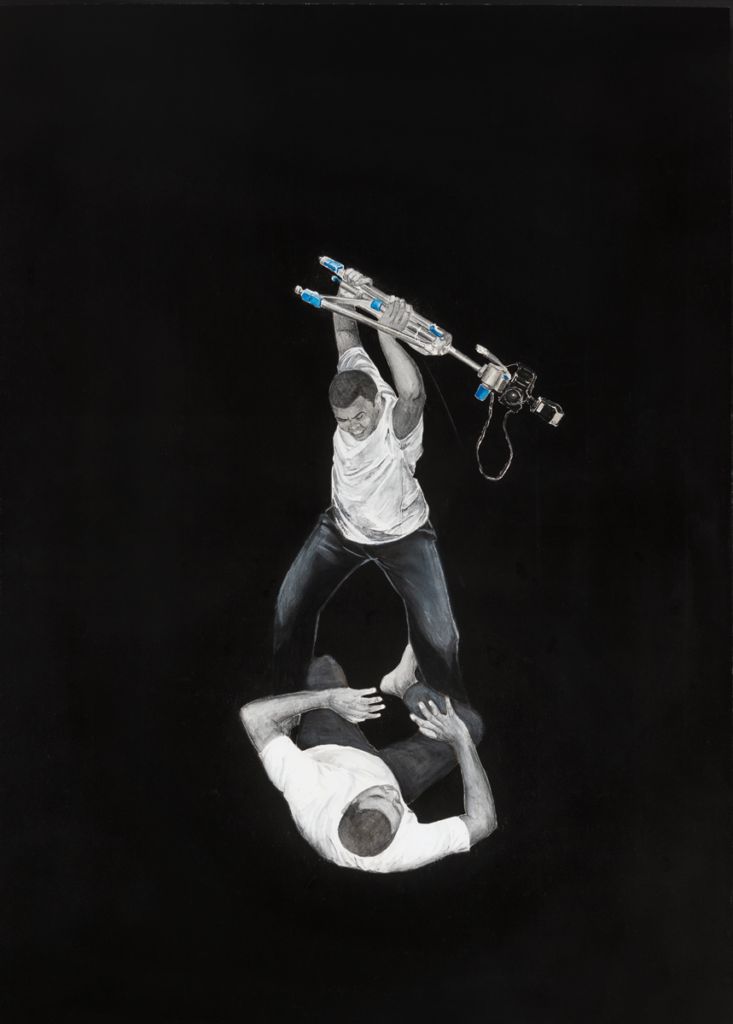
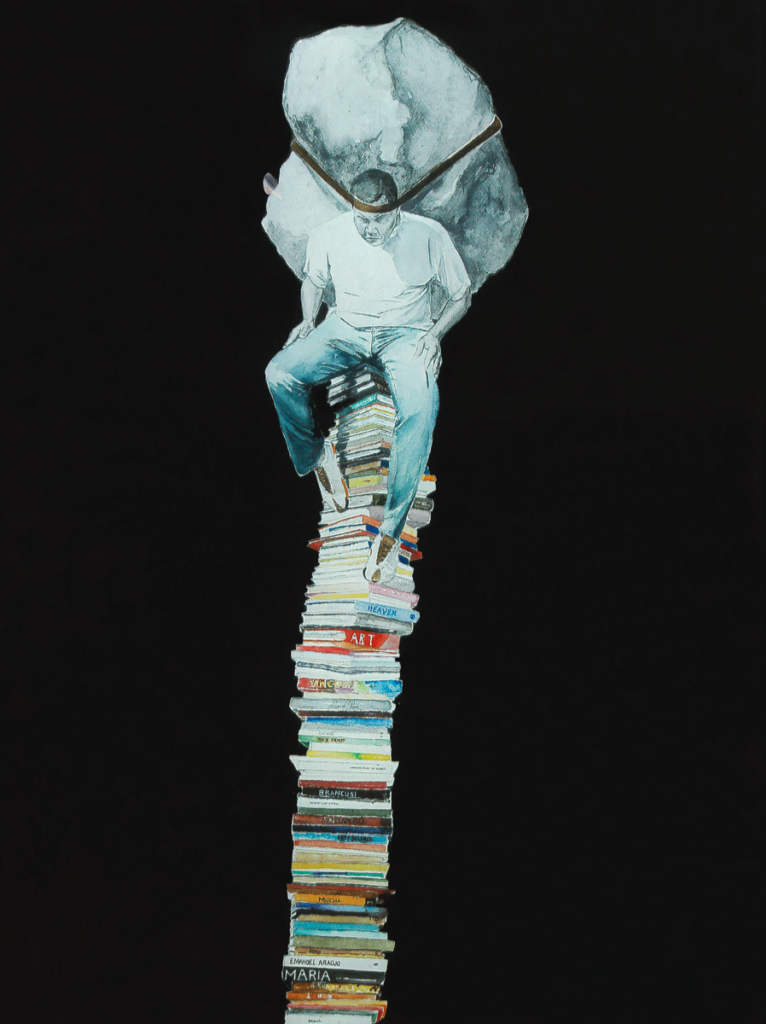
His intimacy with images started in adolescence, through comic books and strips. His father, Antônio Carlos do Amaral, worked at a publisher/printing press and used to bring some of the printed materials home, which were quickly appropriated by his son – so much so that Sidney was nicknamed Gibi [comic book] when he was a child. His father says that, not content with just reading and seeing the images, the boy already started to create his own visual narratives by making scraps and collages.
When Amaral started studying visual arts at the Armando Álvares Penteado Foundation (FAAP) in São Paulo in 1995, his montages gained new layers. According to Lucimara Amaral, his widow, with whom I spoke in order to write this article, the artist devoted himself intensively to producing two-dimensional collages while he was an undergraduate and then as a novice professor, between 1995 and 2005. At that time, during the years 1990s and 2000s, it was common for him to ask those around, including his students, to give him magazines such as Marie Claire, Caras, Claudia, and other popular publications.
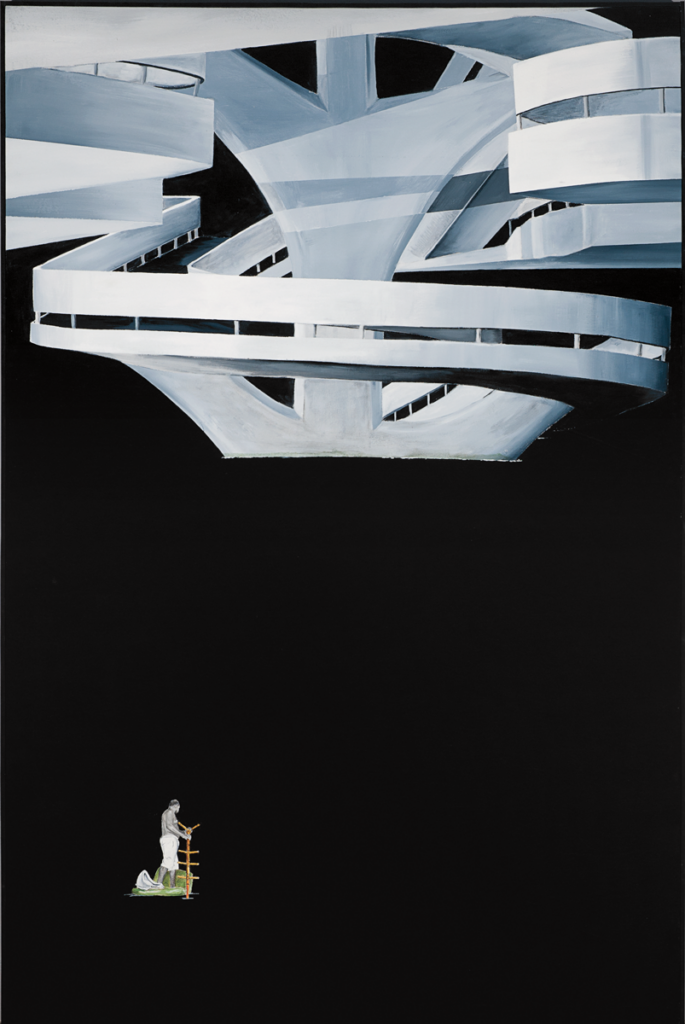
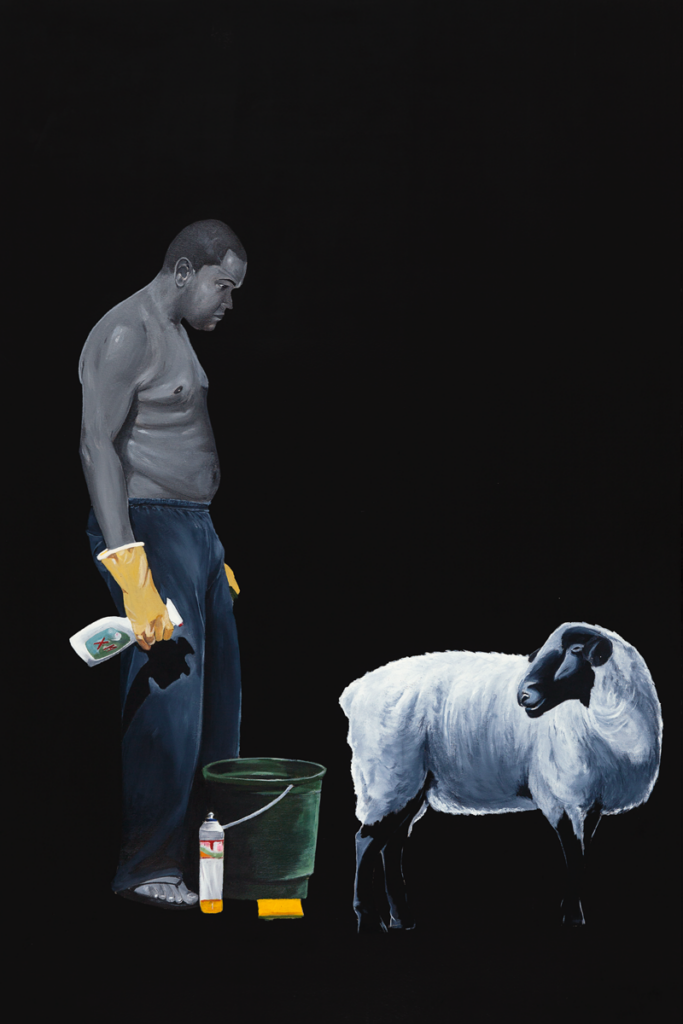
It is not by chance that white bodies and elements of bourgeois consumption often appear in these collages: they are the images that the media produced at the time and disseminated as portraits of Brazilian society. The ubiquity of this imaginary in the media and the naturalization of such bodies and ways of life as social standards had an impact on his first works. During the process of organizing Amaral’s artistic legacy, which started in 2021, a surprising amount of printed material was discovered in his studio, including piles of magazines, comic books and strips, showing the importance that the artist gave to these materials.
The exhibition Sidney Amaral, um espelho na história [Sidney Amaral: a mirror on history] (2022) brought works to the public’s attention which were still little known or shown. In the case of the collages, it is not clear whether their limited visibility in the market was due to the artist’s own choice or because curators considered them to be studies or works dating from his early career and, therefore, to be less prominent within Amaral’s production. Mainly untitled, the collages present various compositions of dreamlike places, populated by fictional beings, sometimes familiar, sometimes repulsive. His free experimentation – while full of veiled criticism – reveals a lively mind which sought to expand its limits. The various sizes and finishes of the works, such as laminating them before framing, the use of photocopies or reprints and the juxtaposition of collages, show that the artist was involved in all stages of production: from capturing the images to the finished work.
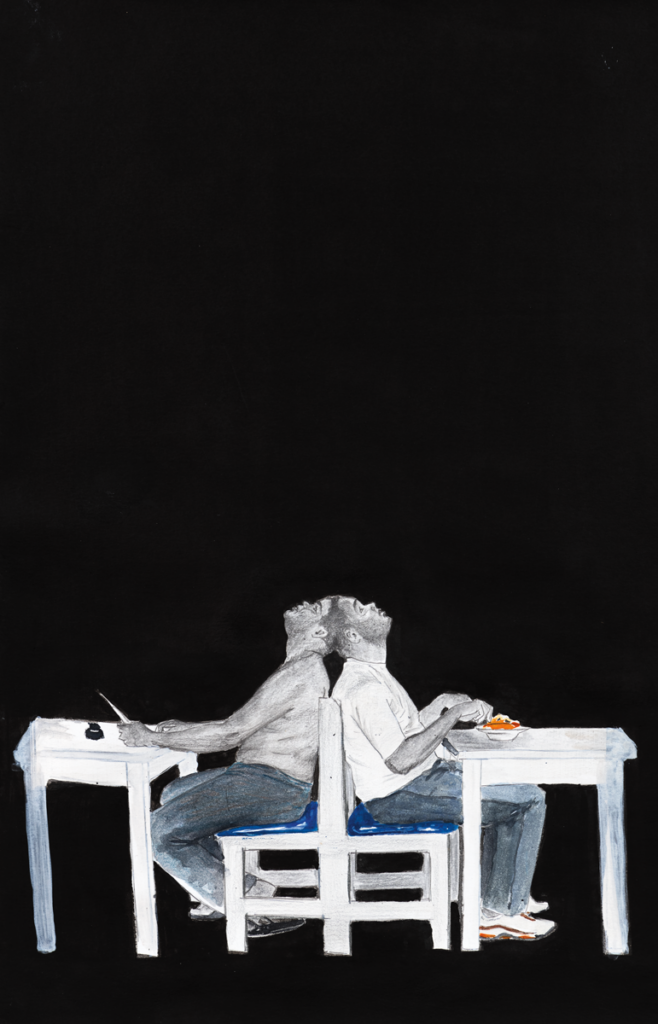
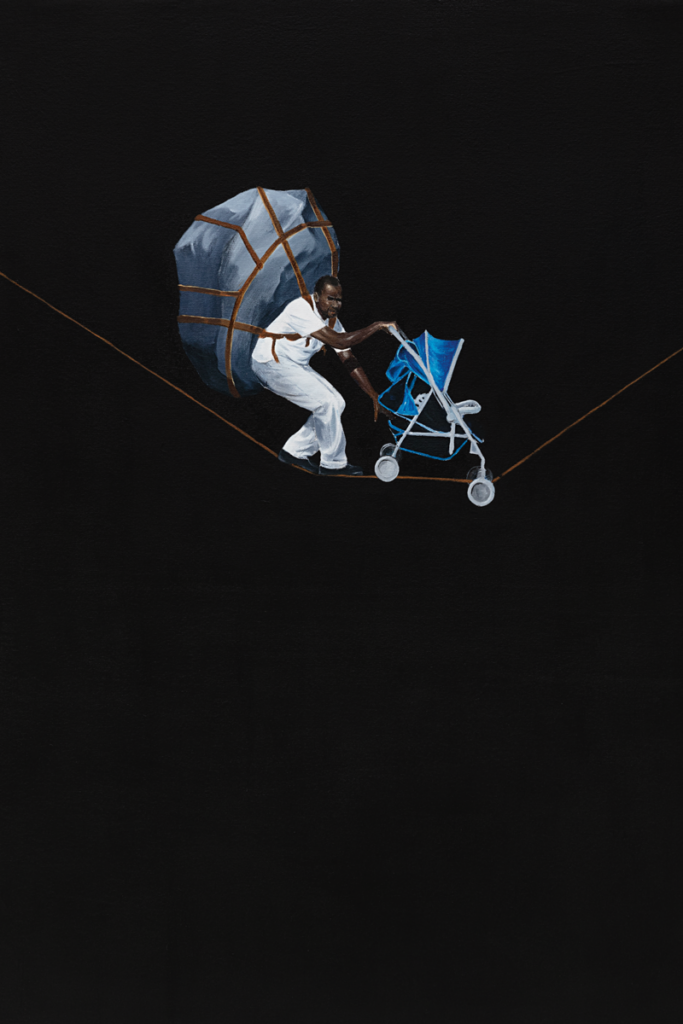
Despite the common language, each collage has a clearly different motif. Many of the scenes highlight a natural or architectural landscape, rebuilding internal or external spaces and occupying them with hybrid figures formed from fragments of people, animals and plants. The characters are quite frequently shown engaged in disconnected actions, full of eroticism. For example, in a scene that mixes beach, mountains and an urban area, we see various beings formed by cutouts of naked adults’ and children’s bodies. A female figure has a huge eye taking the place of her face while her lower body is replaced by a rotten fruit, its red pulp looking like an anus, surrounded by bees. Another being, wearing a cassock, has his hands together in a position of prayer, and in place of his head, an erect penis – while a knife pierces his back.
These images make reference, for example, to the works of Hieronymus Bosch, a 14th century Dutch painter, who in his triptych The Garden of Earthly Delights (1503- 15) – divided between paradise, sin and hell – explores the imaginary of good and evil in the Christian liturgy, representing repressed human desires with scenes of orgies, revulsion and condemnation.
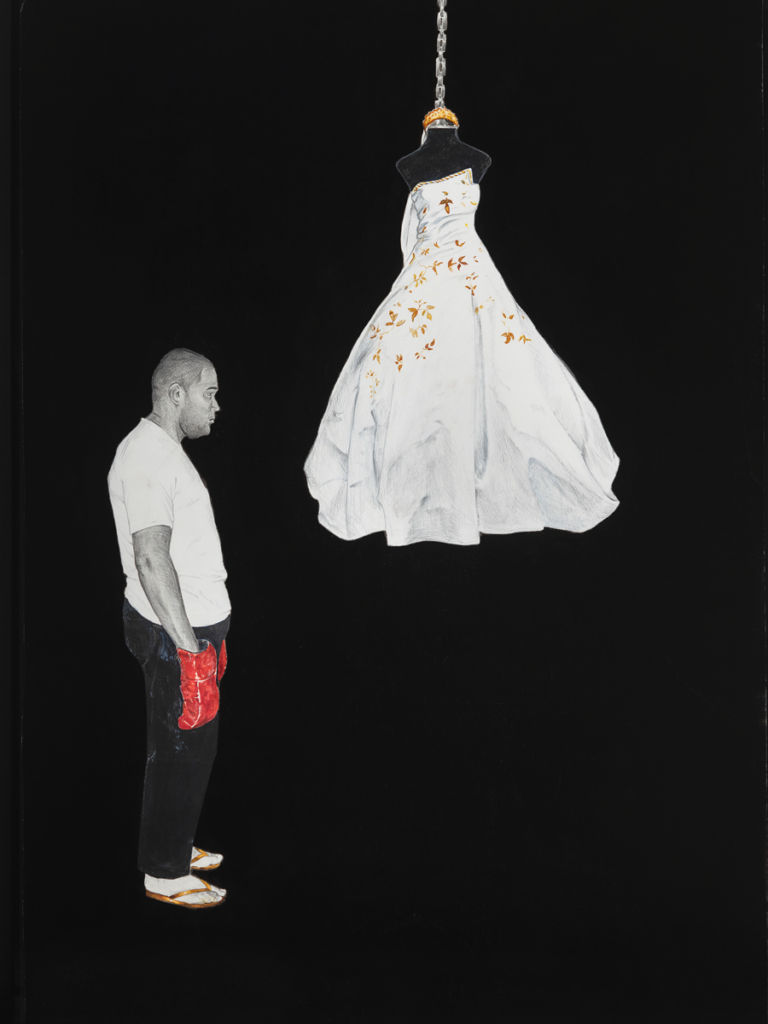
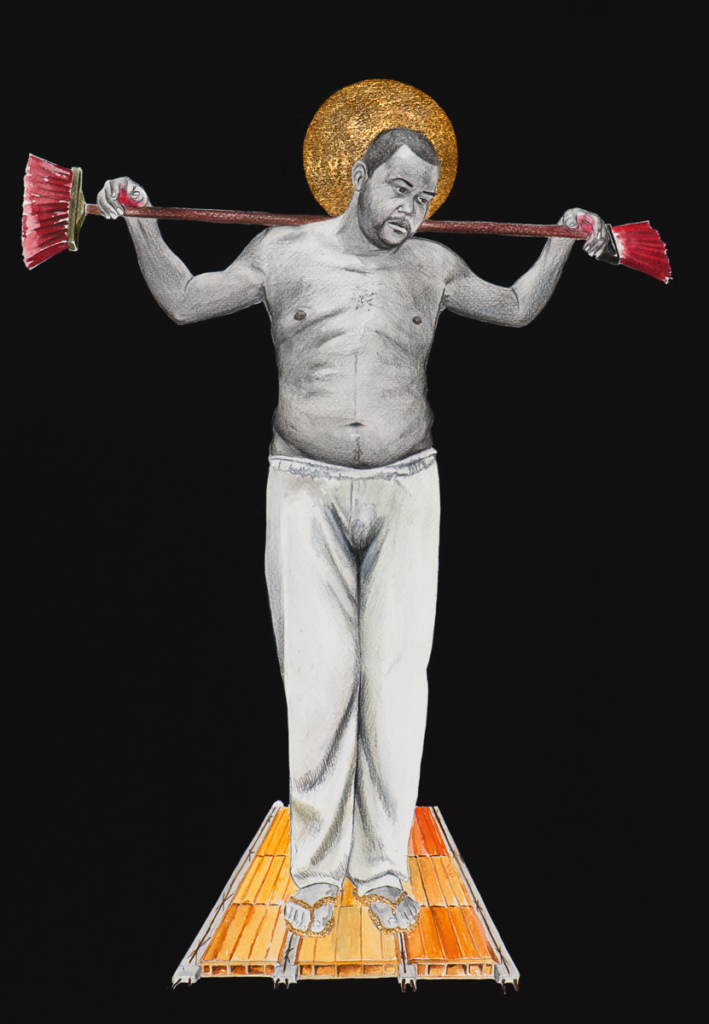
According to Lucimara Amaral, another reference for Amaral as he worked on the collages was the Spanish artist Salvador Dalí, one of the exponents of the European surrealist movement in the early 20th century. With a focus on studying the psyche of the human mind, surrealists saw in the arts ways to explore the unconscious and confront rationality and views of reality. They made extensive use of the language of collages because, in addition to promoting the fusion of elements, it provided a means to extrapolate beyond realism in the arts.
In the Brazilian context, Octávio Araújo, the São Paulo-based artist, who also worked with collages and died just two years before Amaral, was potentially another major influence. With works in important collections, such as the Museu Afro Brasil, the Centro Cultural São Paulo and the Pinacoteca do Estado de São Paulo, Araújo produced a set of unusual scenes which gave prominence to architectural ruins and disturbing montages with human bodies.
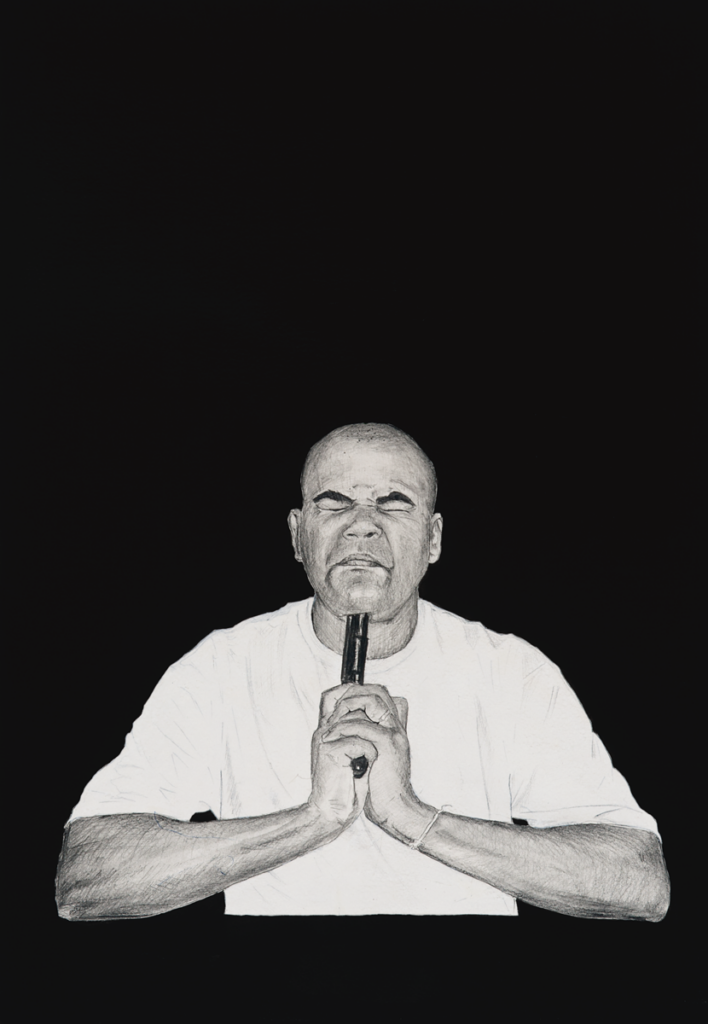
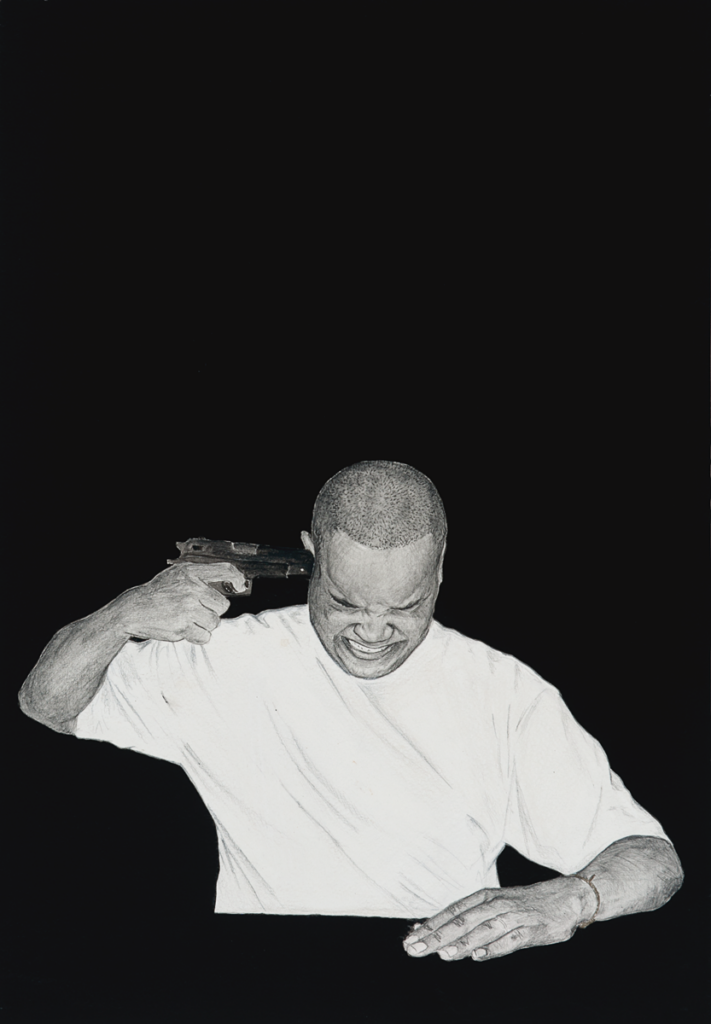
Besides showing Amaral’s immense technical ability to fragment and handle the images, the collages form the artist’s conceptual and discursive arsenal, symptomatic of his way of seeing and reflecting on the world. “I like to think of all my production in a hybrid way, as communicating vessels, where one looks like another, where everything mixes with everything else,” says the artist in an interview with critic and curator Alexandre Araújo Bispo, published in the journal O Menelick 2o Ato [Menelick 2nd act] in 2012. “The intention is to create a conflict in which languages separate into strands and intertwine.”
This investigative process applies to other works developed by Amaral in the course of his career. He uses collage as a way to create, regardless of the language and materiality chosen. Sculptures such as Ressentimento (meu animal doméstico) [resentment (my pet)], Animal político I (o impecável) [political animal I (the impeccable)] and Longe de mim, fora de si e longe daqui [far from me, off their head and far from here], all dating from 2014, are examples of this understanding: the three works bring together everyday elements and encourage the viewer to read them in many different and unsettling ways. Ressentimento consists of a pressure cooker with a mouth and showing teeth suspended by a long spine made of animal bones. Why depict a head as a pressure cooker? Could it be an allusion to his own mind, the artist’s state of mind? In similar analogies of the human body, the other sculptures present a set of plumbing pipes with a bronze cup at the top, and balloons with sculpted human ears attached, respectively. Amaral uses disjunction and fragmentation to promote their opposite: spectators get closer and become more aware.
In his paintings, it is possible fo find similar associations. The polyptych Incômodo [discomfort] (2014) retells Brazil’s struggle for freedom in several scenes. Four panels of the work reposition emblematic historical figures and engender personal and collective references. Amongst them are important figures in the struggle to abolish slavery, such as lawyer and abolitionist Luís Gama, poet Castro Alves, journalist José do Patrocínio and abolitionist leader Francisco José do Nascimento, the Dragon of the Sea. Scenes of celebration allude to the African and Afro-Brazilian legacy in Brazil: cheerful children playing, showing affection and celebrating life; a pregnant woman with her hands on her belly, waiting for the birth of her child. Each image was carefully selected by the artist to articulate relationships between past, present and future. In addition to the consecrated and familiar images, we can also identify some figures originating from the magazines kept by the artist in his studio.
In other works, the collage process forms part of the pre-production stage, such as the gesture of lending his own image, through photography, for the later production of paintings and drawings. In making these portraits, it was Lucimara’s responsibility to get to the “perfect photograph”, which involved not only handling the camera or pressing the shutter button, but, above all, understanding Amaral’s creative and investigative process. These photographs show the artist enacting different aspects of himself and other characters. Then, with the photograph in hand, Amaral studied various transfer techniques, such as drawing from observation and the use of transparencies. For O limite do meu talento [the limits of my talent] (2010), for example, he posed with his daughter’s pram on a lawn. The canvas depicts a father with an enormous rock tied to his body, pushing a pram while he balances on a tightrope.
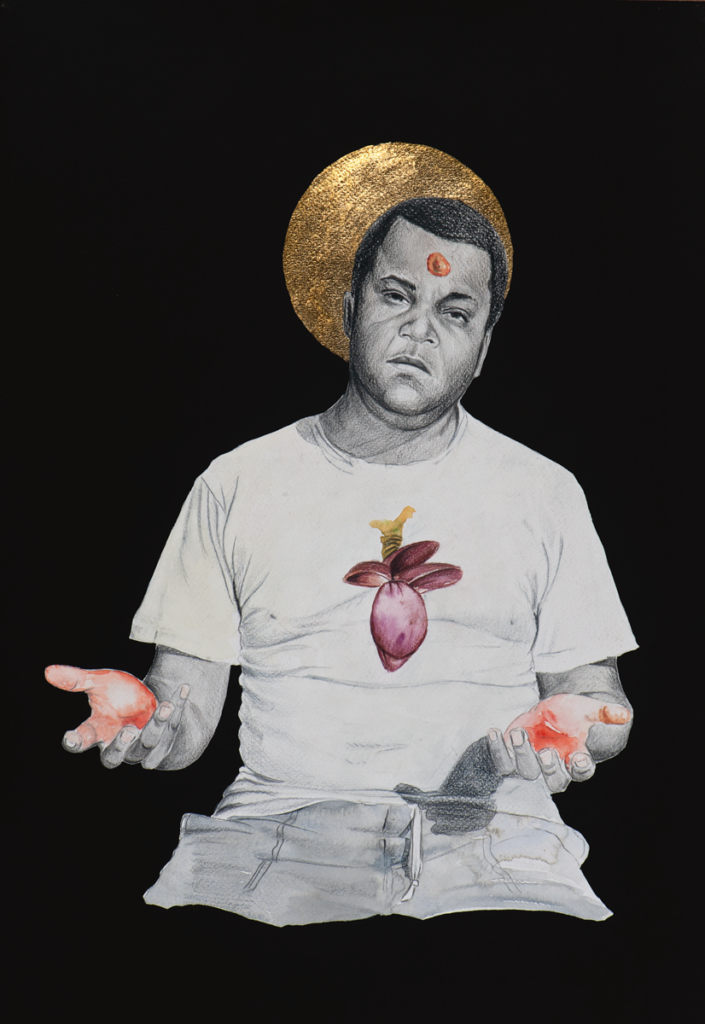
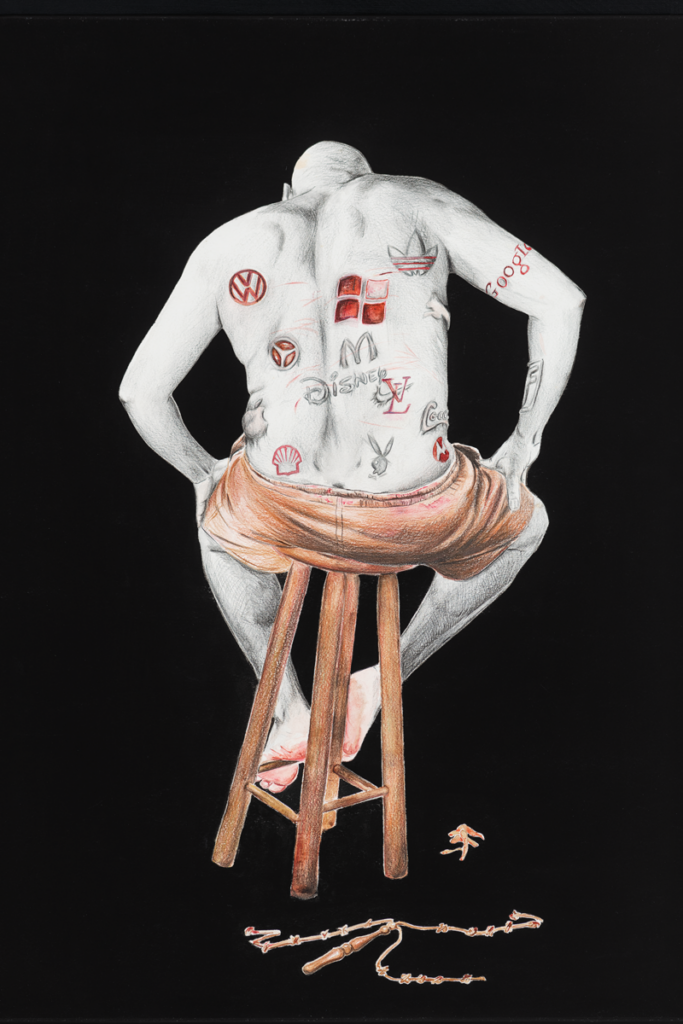
In many of these works, the artist covers the background of the canvas in black to make the figures wrapped up in their human dilemmas stand out, revealing their collective weaknesses through visual metaphors: a boxer lies still in front of a wedding dress hanging in front of him in place of a punchbag; an artist-sailor navigates alone in the vast immensity and oppression of the arts system; an individual who has to deal with racism and the subtleties of racial tensions is obsessively cleaning a sheep, to leave it white; Siamese twins united by the head sit back to back at school desks – while one studies, the other eats; a Christ wearing flip-flops lies on a slab, with broom handles representing his cross.
“I aim to demonstrate, through the relationship of my character with the objects shown, how communication between people is difficult, even among those who love each other,” says Amaral in his interview with Araújo Bispo. “How can the home also be a space of non-communication for those who live there?” asks the artist.
In Amaral’s work, these images appear to be more than mere representations and metaphors: the artist is truly sharing as he opens up his emotions. Most of the scenes are associated with Amaral’s experiences, and he never denied that his paintings were collages of himself – but never reduced them to that alone. They are ambivalent images, which extrapolate the surface of the visible and lead us into the depths of the psyche. In various portraits where a gun is pointed at a head, for example, the artist shocks us with the scene of violence while enchanting us with the technical mastery of his painting. In the face-to-face confrontation between us and these works, in the disturbing pulse of death and life, of beauty and repulsion, we also recognize ourselves.
With Amaral, the collage and photography recompose the traces of what he considers (his) reality, in which the sensitive artist, the technician, the critic and the politician coexist. Human frustration and anguish, will and extravagances, repression and internal demons – how to deal with them? With Amaral’s work, we begin to inhabit this place where imperfection is permitted, a place for reformulation, for the criticism of oneself and the world. The artist used to place himself as the mirror of history:
“I always see my work as a mirror that, when looked at for a long time, reminds us of these metamorphoses of the world, of my wanting to be in the world and find my place… I am a being that is always displaced,” he said in the 2012 interview. May his presence reverberate in us and that his life and work be our mirror for many years and generations. ///
+
Images provided by the Almeida & Dale Art Gallery.
CAPTIONS p. 85: Embate − O eu e o outro [clash − the self and the other], 2014. p. 86: A alegria dos envolvidos II [the joy of those involved II], c. 2010. p. 87: O estrangeiro [the foreigner], 2011. p. 88: A ovelha e eu [the sheep and I], 2011. p. 89: O artista de um único sucesso [the one-hit artist], 2011. p. 90: O limite do meu talento [the limit of my tal- ent], 2010. p. 91: Bem me quer, mal me quer [she loves me, she loves me not], from the series Relações delicadas [delicate relations], 2010. p. 92: A laje [the slab], 2012. p. 93: Demiurgo II [demiurge II], 2010. p. 94: Studies for Imolação [immolation], 2009/2014. p. 95: Studies for Imolação [immolation], 2009/2014. p. 96: Açoite [whipping], 2012.
Sidney Amaral (São Paulo, SP, 1973-2017) was a visual artist and professor, graduated from Fundação Armando Álvares Penteado (Faap) and Escola Panamericana de Artes. His work is part of the collections of institutions such as Pinacoteca do Estado de São Paulo and Museu Afro Brasil (SP and BA).
Luciara Ribeiro (Xique-Xique, BA, 1989) is a professor and curator, with a master’s degree in Art History from the University of Salamanca, Spain, and from the Post-Graduate Program in Art History at the Universidade Federal de São Paulo (Unifesp). She was the curator of the exhibition Sidney Amaral, um espelho na história [a mirror in history] (Galeria Almeida & Dale, 2022).
Originally published in ZUM Magazine #24, April 2023


